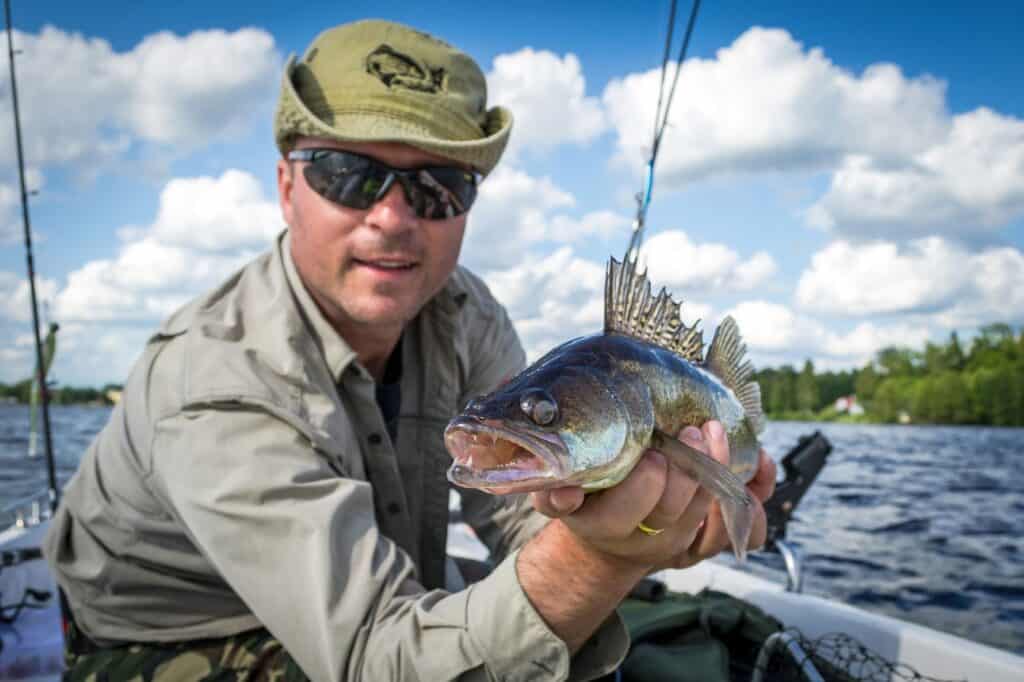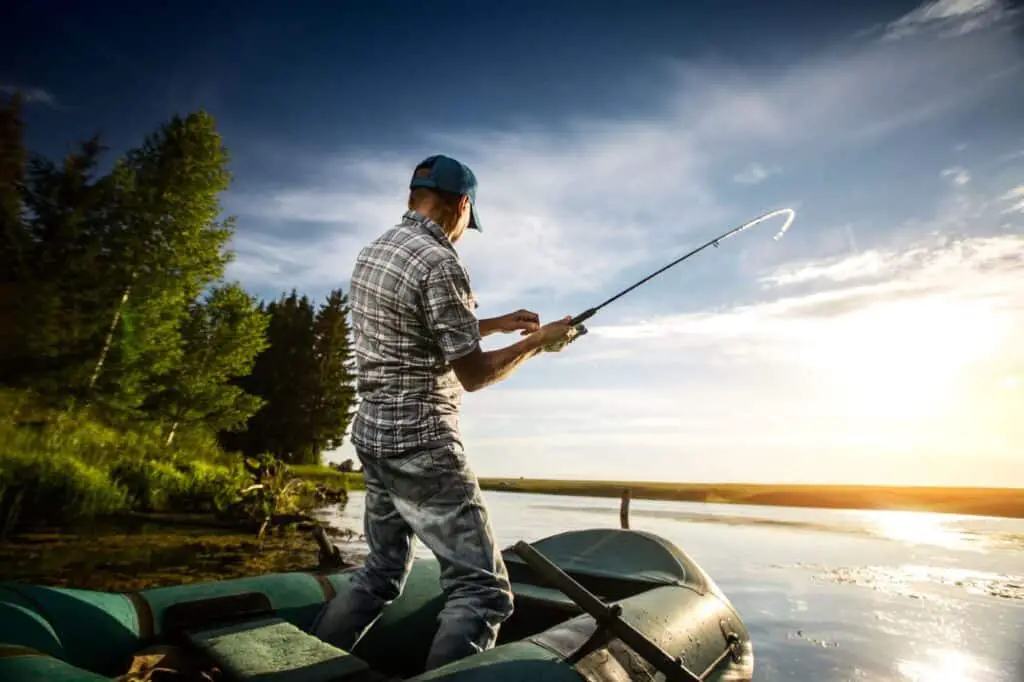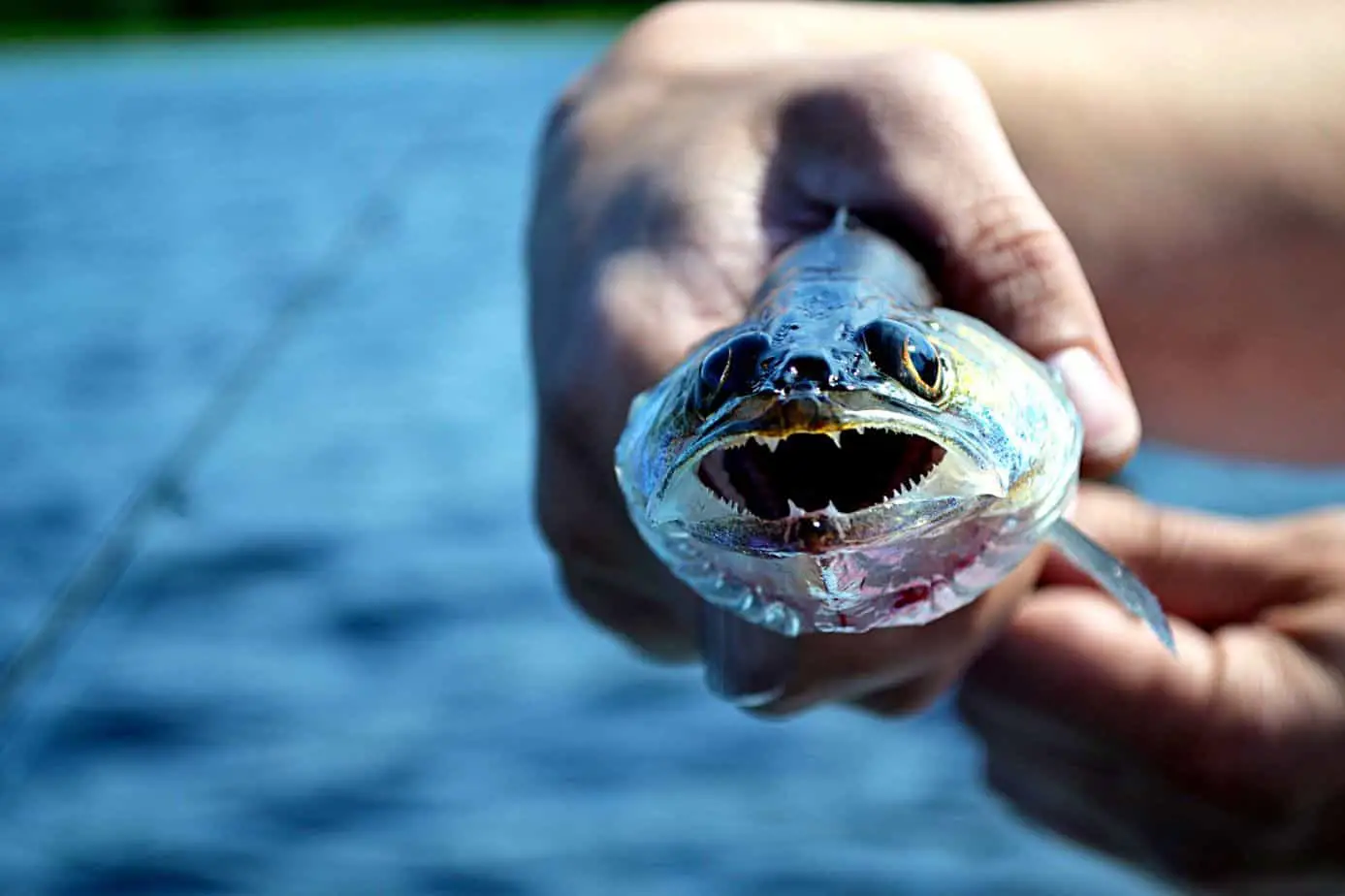These are two of the most sought-after gamefish in the USA. Although they are easily distinguishable from one another to the uninitiated, they can appear to be remarkably similar. They both live in comparable habitats; they can both grow to be large fish, and they both feed on the same types of prey.
While they are often confused, telling them apart isn’t difficult. For starters, they both belong to entirely different families. Walleye are the largest members of the Perch family, whereas Muskie are the largest members of the Pike family. They are both fearsome predators and inhabit a wide range of waters across the USA and Canada.
This article explores both species and informs and educates anglers and non-anglers alike in all facets of these fascinating fish. It will also offer some great advice on how, where, and when to catch these fish for anglers.
Main Differences between Walleye and Muskie
Walleye and Muskie have entirely different family trees, and there are several marked differences to cover that will help identify which is which. Interestingly, Walleye are frequently and erroneously called Pickerel in Canada, another member of the Pike family.
Appearance
Muskie have elongated ‘torpedo-shaped bodies with a pointed snout and a flat head. By comparison, Walleye, while still long and slim, have a more rounded body and head. Another area of significant difference is in their fins. Muskie have one dorsal fin that is situated close to the tails. Walleyes have two dorsal fins. The forward placed dorsal is spiny while the rear one is soft. Muskie also have their pelvic and anal fins set further back on their body than the Walleye does.
Colorings can be pretty similar in some instances as the Muskie can be silver, olive, brown, or green. They also have vertical stripes on their sides, which at times can appear as spots. In some instances, these can be missing altogether.
Walleye are generally olive and gold in color with a white underside. They also have black bands or spots that cross their backs and distinctive eyes with a layer of pigment behind them to aid low-vision sight. This pigment can make their eyes glow in the dark.
Muskie are the larger of the two fish, as the table below shows.
| Muskie | Walleye | |
|---|---|---|
| Average Weight | 15lbs to 36lbs | 14lbs |
| Average Length | 28 to 48” | 33” |
| IGFA World Record | 67lbs 8ozs | 25lbs |
| Lifespan | 18 years | 15 to 25 years |
In both species, the females are larger than males. In the case of the Walleye are also longer living.

Distribution
Walleye’s natural range is restricted to the northeastern US and Canada; however, they have been widely introduced further south. In Canada, they range from Northwest Territories to Quebec and in the United States as far south as Arkansas, Alabama, and the Mississippi basin.
Muskie are found across much of the northern states and into Canada and the great lakes. Their range extends as far south as the Tennessee river, they have also been introduced into many other areas, so there are pockets of them through much of the USA.
Additional Facts about Walleye
Both these species make excellent sport for the angler, and as all anglers know, the more knowledge they glean about their opponent, the better the chances of catching them is. Listed below are some facts to help you understand the lifestyle and characteristics of this captivating fish.
- Eyesight – They have a retinal membrane behind their eyes. This layer of pigment gives them phenomenal low-light vision. In angling terms, this means the best time to fish for this species is on dull days, dawn and dusk, and even through the night. This species will head to deeper water on bright days or seek shelter in hollow tree trunks or under lily pads.
- Diet – These are predatory fish and feed mainly on smaller fish. They are also opportunistic feeders and feast on crayfish, frogs, small mammals and insects, and insect larvae. Immature fish are more likely to feed on the latter.
- Spawning – From early spring to very early summer is when they are likely to spawn. The crucial factor is the water temperature, Walleye spawn when the temperature is between 40 and 55 degrees. A fully mature female can lay around 500,000 eggs and find a shallow and sheltered area to lay them, once fertilized, they usually hatch in little more than a week.
- Fishing Season – Walleye fishing is year-round, but the best time to fish for them is the few weeks on either side of the spawning season. Summer fishing is still possible but aim for the duller days or even through the night as their eyes are too sensitive to cope with bright days. However, there are often local restrictions on fishing times, so always check before setting out on a fishing trip.
- Habitat – In the case of Walleye, the murkier the water, the better. Lakes and large slow-moving rivers with plenty of vegetation and a silty bottom is perfect for these creatures. They tend to lie around the edge of reed beds when feeding, looking to ambush unsuspecting prey. At night time, they will move further into the shallows.
Additional Facts about Muskie
These are a real prize for anglers and are often referred to as the fish of ten thousand casts, but when you hook one, you know all about it. For this reason, it is best to prepare for any fishing trip forearmed with as much knowledge as possible.
- Diet – Muskie aren’t a fussy fish when it comes to diet; if it moves, it will eat it! Like the Walleye, smaller fish make up the bulk of an adult Muskie’s diet, but they have also been known to feed on frogs, mice, and even birds.
- Tiger Pike – Muskie can, on occasion, crossbreed with Northern Pike. The offspring is an infertile species known as the Tiger Pike, growing faster than either parent species.
- Spawning – Muskie spawn when the water temperature reaches 60-degrees. This occurs typically sometime in April and May. When breeding, both sexes head for shallow and warmer areas of water and swim side by side for possibly hundreds of yards, with the female depositing the eggs and the males depositing the sperm.
- Fishing Season – Fishing for Muskie can be done all year round. Anglers should vary their tactics depending on the time of year they are fishing. In the warmer months, the fish tend to feed more when the water temperature is coolest. Around dawn and dusk are ideal times. In the winter months, they tend to be more active during daylight hours.
Different Fishing Tips and Techniques for Walleye and Muskie
These are both hefty fish with mouths full of razor-sharp teeth, so your tackle should be on the heavier side. This particularly applies if you are targeting Muskie. One piece of crucial advice applies for both species – Use a wire trace on the business end of your tackle to stop the fish from cutting through the monofilament with its teeth.
Tackle-wise, it doesn’t need to be anything fancy for either species. A basic (but sturdy) spinning outfit is all you need to get started. Many fly-anglers are getting in the act on these species as well. While the Walleye can produce excellent sport on lighter tackle, a rod rated at least a 7-weight would be highly recommended for fly-anglers looking to tackle Muskie.
Best Time to Fish
For Walleye, aim for duller days or the twilight and dawn hours, and right through the night too! The height of the summer is not a great time to target this fish, particularly brighter days. It is always a great time to fish for these in the run-up to the spawning season. For a few weeks after as they tend to congregate in shallower waters.
Muskie aren’t quite as fussy; they are just as tricky to catch the whole year round! As noted, they tend to feed during the day in the winter and at either end of the day in the summer months. The optimum time of year to fish for Muskie is the Spring and Fall seasons when they are either fattening up after the winter and getting ready to spawn or building up fat reserves for the winter ahead.

Baits to Use
These will both go for the same sort of baits. Live baiting minnows, where permitted, is a particularly successful method that will work on both fish. All spinners, plugs, crankbaits, and spoons can be used to great success, particularly minnow imitations. A great all-rounder that is renowned by anglers of both species is the Johnson Silver Minnow Spoon. Other common baits include leeches and nightcrawlers.
For fly-fishing large streamers and minnow imitations can work a treat as poppers and other surface agitators can be on the right day.
Conclusion
These are two of the hardest-fighting game fish in the USA, and we hope this article has helped you understand the differences between the two. Both fish take patience and perseverance to catch, but the results are well worth the effort.
If you enjoyed this article, why not spread the word and share it on Social Media? And if you want to be kept up to date on all the news and features from the website, why not sign up for our newsletter too.
If you find this article helpful, don’t leave without sighing up for our newsletter and checking out our Recommended Fly Fishing Gear List.
Don’t forget to check out our other Fish Guide articles.
- Are Bass Good To Eat?
- What’s the Difference Between Trout and Salmon?
- Are Bonefish Good To Eat?
- What’s the Difference Between Carp and Buffalo Fish?
- Are Pike Good To Eat?
- The 7 Best Secret Rainbow Trout Baits
- Best Powerbait For Stocked Trout
- What Is The Difference Between Walleye And Pickerel?
- What Is A Tiger Trout? Where to Find One and How To Catch One


